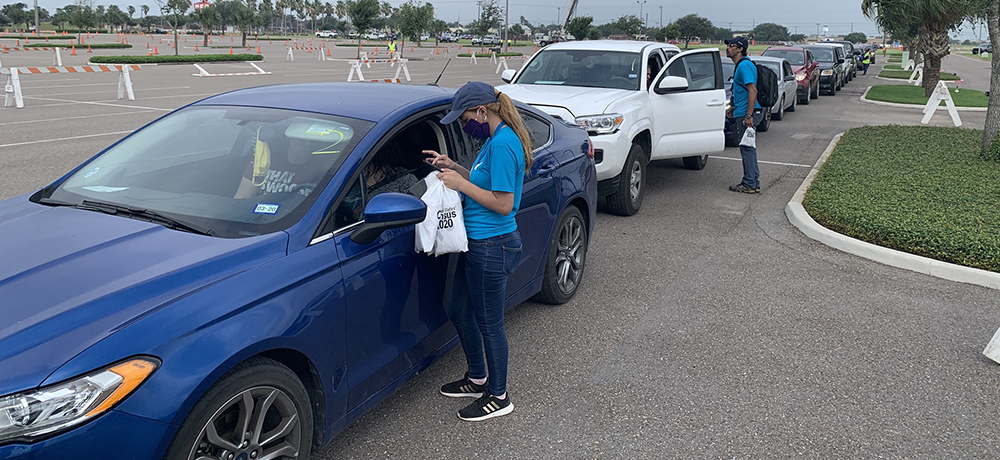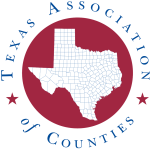County Magazine | October 14, 2025
The 2030 census may seem far away — it's not
Texas counties that invest in census outreach now stand to gain in funding later

Every 10 years, U.S. Census Bureau workers fan out across the country, knocking on millions of doors with the goal of counting every living person in the U.S.
They hand out surveys asking for demographic information — age, race, sex, ethnicity — along with housing type and household size.
It’s an enormous undertaking. And the stakes are high for Texas counties.
The decennial census helps determine how billions of dollars in federal funding are allocated to states for everything from transportation projects to special education programs and supplemental nutrition assistance.
“There are more than 350 federal programs that use population data, everything from Medicaid and Medicare to infrastructure funding and emergency response,” said Angela Broyles, Founder & CEO of the nonprofit Texas Census Institute, which formed to help boost participation in 2030. “Those 350 programs touch every aspect of our lives.”
Census data also determines how many seats each state holds in the U.S. House of Representatives. In the 2020 Census, Texas was one of only six states with an undercount — by an estimated half a million people. As a result, the state lost out on about $25 billion in federal funding and one additional congressional seat.
Some might ask, “It’s only 2025. Why worry about the census now?”
Broyles and others say preparing for an accurate count takes years. It includes identifying where undercounts occurred and why, building relationships with trusted messengers, planning outreach, and ensuring counties update address lists so census workers know where to knock on doors and send forms.
“There are many things that Texas could have been doing prior to the 2020 census to both improve the data but also make the work of getting everybody to take the census easier,” Broyles said.
How counties play a role
Texas counties play a pivotal role in boosting census participation. Federal funding for roads, schools, hospitals and services depends on participation — and for small counties, that support is critical.
Hidalgo County in South Texas is one that felt the effects of an undercount in 2010, with an estimated hundreds of thousands of residents who were not counted.
To improve that in 2020, county leaders began preparing years in advance, hiring six people dedicated to census efforts and setting up committees that included educators, businesses and nonprofits. They launched social media accounts, bought TV and radio spots, sent a weekly newsletter with updates, and even had caravans that went into rural colonias with megaphones to tell people about the census.
“A lot of our community is rural and does not have immediate access to the internet,” said Hidalgo County Judge Richard Cortez. “We worked with the school districts and nonprofits to get residents access to computers so they could get counted.”
The county even held a “Census Bowl,” a 13-week football-themed competition in which each school district competed for the highest response rate. They partnered with Fox/Univision and posted live updates on Fridays. “Each week on the census website, we could see an uptick as the schools replied to the census,” Cortez said.
To reach younger people, they created coloring books and crossword puzzles to hand out in classrooms. “Our thought was that if we could get these children to understand the importance of the census, in 10 years, they will be adults and know they need to get counted,” Cortez said.
The COVID-19 pandemic introduced new challenges in 2020, as it became harder to reach people in their homes. Hidalgo County took advantage of food distribution and testing and vaccination sites to get people registered.
Perhaps most important for Hidalgo County was updating their address lists, making sure Census Bureau workers had the most accurate data to begin their work.
Hidalgo County’s Planning Department, through the Local Update of Census Addresses program (or LUCA), requested a list of addresses the Census Bureau had in its files for every home in the county, then went to work updating it.
LUCA allows local governments to review this data and correct their address lists before the decennial census. They can submit changes, including areas with new development or non-traditional housing such as converted garages, travel trailers and tiny homes.
“Properly counting 200 missed addresses could bring millions in needed funding to a region,” Broyles said.
Facing challenges
Encouraging people to respond to the census isn’t always easy. One of the biggest obstacles is a lack of public knowledge about how it affects everyone from the Panhandle to the Texas coast.
“I think most people just think they are counting people because we’d like to know how many people live here, that it would be nice,” Broyles said. “Even people that are highly educated voters and engaged might not really understand the potential impact.”
Renters are less likely to participate than homeowners. Many others worry how their data will be used. Broyles stresses that all census data is stripped of personally identifiable information. “The bureau goes to enormous lengths to make sure that information is protected,” she said.
In 2020, Dallas County recognized that reaching people effectively often means looking beyond traditional government channels.
“The best person to talk to them isn’t always the mayor and judge, so we looked at our most trusted messengers,” Dallas County Judge Clay Jenkins said.
Schools, hospitals, churches, mosques and synagogues became key partners in sharing information. “As an elected official, you have the relationship with that school superintendent or mosque leader, so you can have a conversation with them about why it’s important to answer the census,” Jenkins said.
Jenkins also stressed the importance of working with neighboring counties. “If North Texas is going to get highway funding, that highway will touch upon all the counties. It really behooves everyone to work together.”
Still, simple apathy keeps many from participating. People today often avoid a knock at the door. They get so many emails and are busy tackling other challenges of day-to-day life. They think, “Why should I respond to this one other thing?”
“I think it’s important for community leaders, especially elected officials, to educate people about how important participation is,” said John c-re-ay, a former Caldwell County commissioner and Texas state representative. “If you don’t have the correct data, then you are losing out to other states. If you want to look at it as a competition, that’s what it is.”
Next steps
Hidalgo County officials are already preparing for 2030, reassembling their census committees and brainstorming new ideas to reach people. They are looking for funding to help with their efforts and preparing another address update.
Although the window to participate in LUCA is not open until 2027, counties can begin gathering local geographic and address data now and identifying new or unlisted housing units.
Governments are also encouraged to begin holding workshops and town halls to educate people early about the census. For guidance, the Texas Census Institute suggests reaching out to them directly. They can help get answers to questions and make connections, as well as help with message testing and building coalitions.
“Texas counties are grappling with so many other things,” Broyles said. “We want to serve as a resource.”
A snapshot of programs using census data:
Health and Human Services
- Medicaid
- Children’s Health Insurance Program (CHIP)
- Community health centers
Education
- Special Education (IDEA)
Food and Nutrition Assistance
- Supplemental Nutrition Assistance Program (SNAP)
- Women, Infants, and Children (WIC)
- National School Lunch Program
Infrastructure and Transportation
- Highway planning and construction
- Rural Transit Assistance Program
- Community Development Block Grants (CDBG)
Housing and Community Development
- Section 8 Housing Choice Vouchers
- Low-Income Home Energy Assistance Program (LIHEAP)
Public Safety and Emergency Response
- Disaster relief and FEMA resource allocation
Support for Older Adults
- Older Americans Act Programs (Meals on Wheels, senior centers, etc.)

